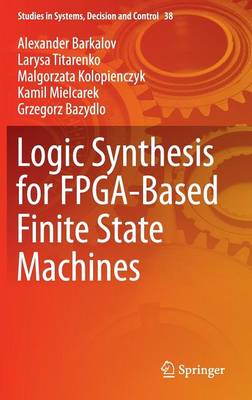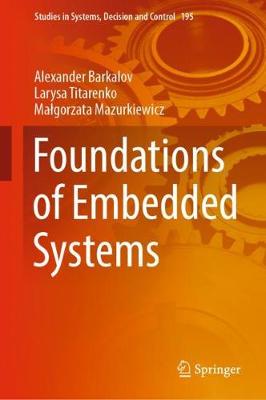Studies in Systems, Decision and Control
3 primary works
Book 38
Logic Synthesis for FPGA-Based Finite State Machines
by Alexander Barkalov, Larysa Titarenko, Malgorzata Kolopienczyk, Kamil Mielcarek, and Grzegorz Bazydlo
This book discusses control units represented by the model of a finite state machine (FSM). It contains various original methods and takes into account the peculiarities of field-programmable gate arrays (FPGA) chips and a FSM model. It shows that one of the peculiarities of FPGA chips is the existence of embedded memory blocks (EMB). The book is devoted to the solution of problems of logic synthesis and reduction of hardware amount in control units. The book will be interesting and useful for researchers and PhD students in the area of Electrical Engineering and Computer Science, as well as for designers of modern digital systems.
Book 113
Logic Synthesis for Finite State Machines Based on Linear Chains of States
by Alexander Barkalov, Larysa Titarenko, and Jacek Bieganowski
This book discusses Moore finite state machines (FSMs) implemented with field programmable gate arrays (FPGAs) including look-up table (LUT) elements and embedded memory blocks (EMBs). To minimize the number of LUTs in FSM logic circuits, the authors propose replacing a state register with a state counter. They also put forward an approach allowing linear chains of states to be created, which simplifies the system of input memory functions and, therefore, decreases the number of LUTs in the resulting FSM circuit. The authors combine this approach with using EMBs to implement the system of output functions (microoperations). This allows a significant decrease in the number of LUTs, as well as eliminating a lot of interconnections in the FSM logic circuit. As a rule, it also reduces the area occupied by the circuit and diminishes the resulting power dissipation.
This book is an interesting and valuable resource for students and postgraduates in the area of computer science, as well as for designers of digital systems that included complex control units
Book 195


